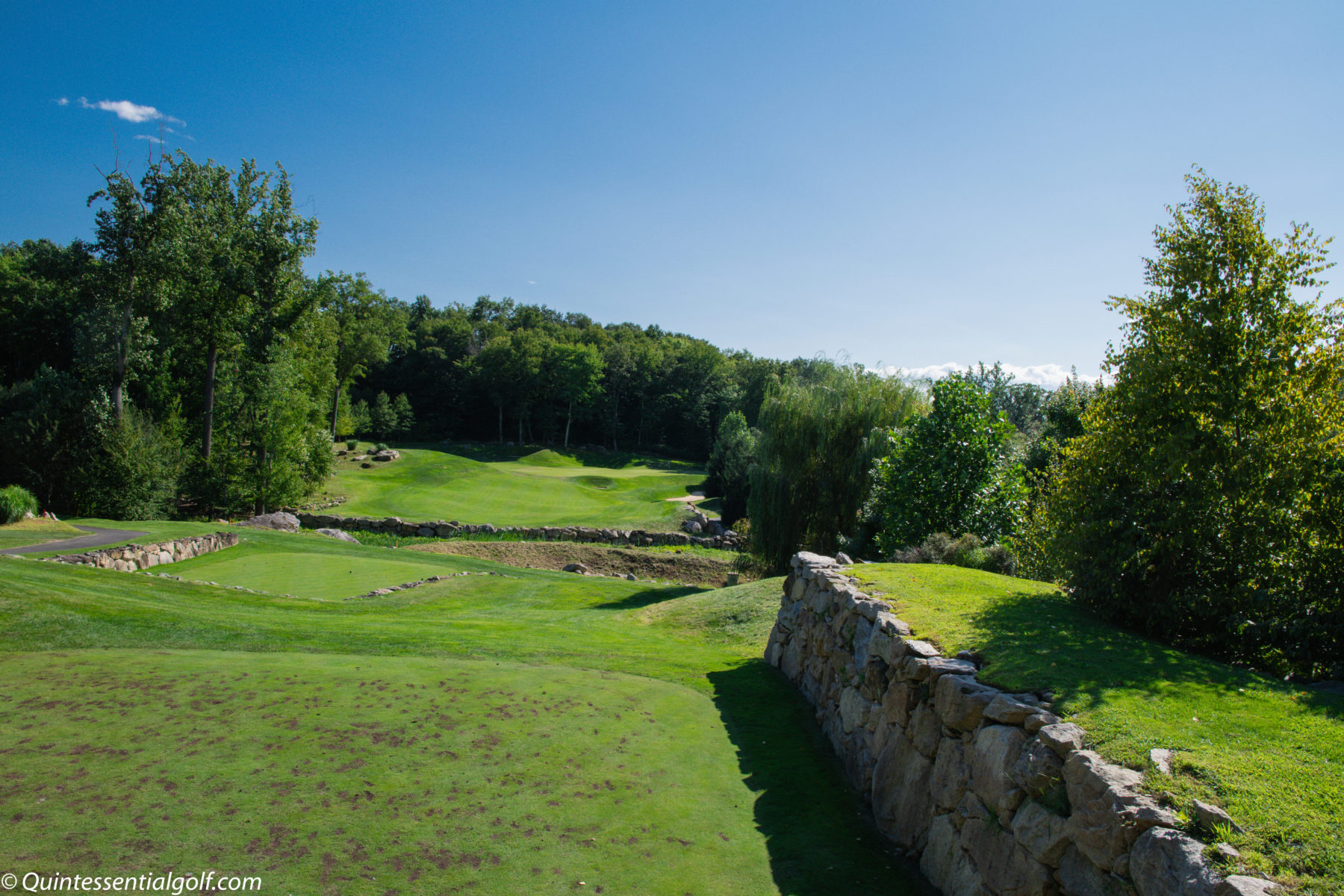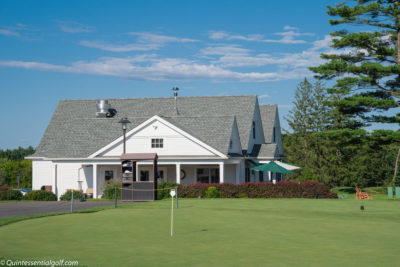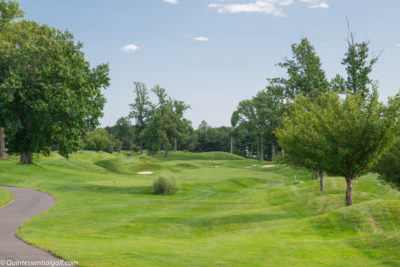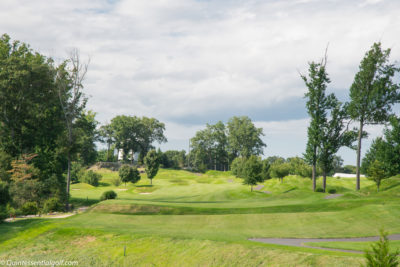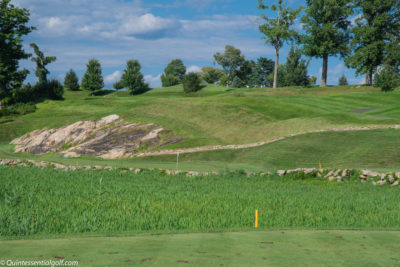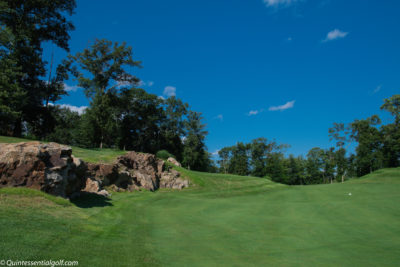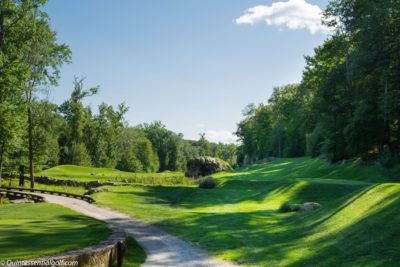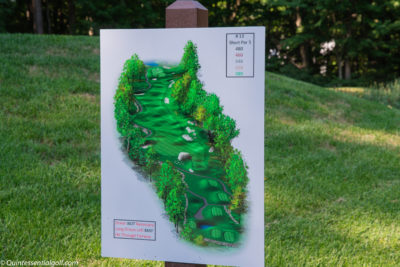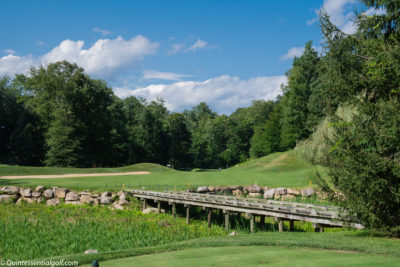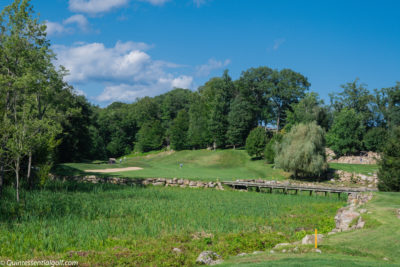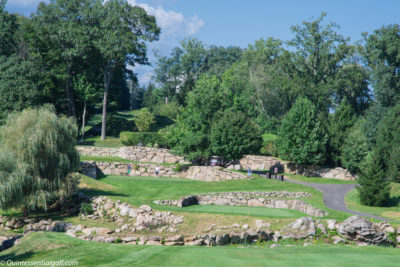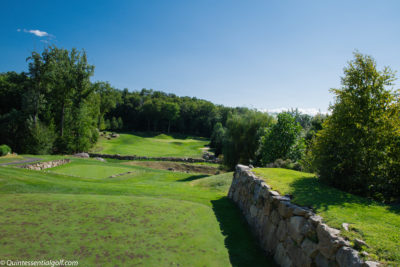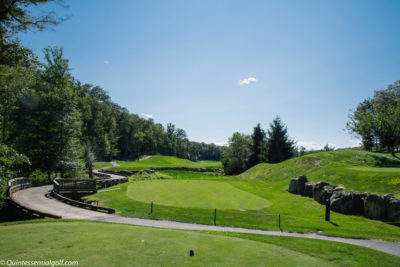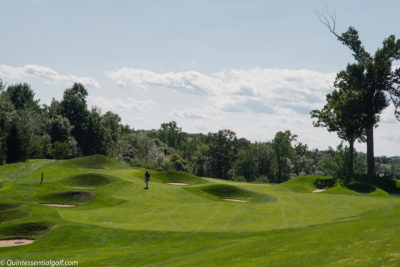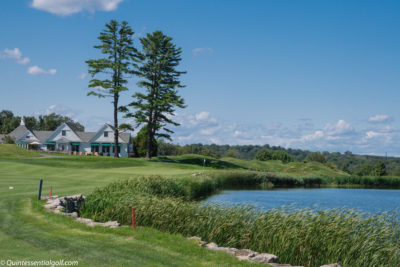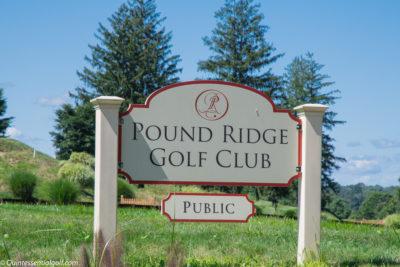On the way back to New York City, I played the privately owned but public Pound Ridge Golf Club, only ten minutes north of Stamford Connecticut and an hour north of the city. In an area with a multitude of renown private country club courses, it is nice to see a premier public track, ranked #4 in the state of New York. It’s the only course in the state designed by the legendary Pete Dye.
Opened in 2009 by Ken Wang, the owner has a long passion for golf. The land where Pound Ridge Golf Club sits originally included a nine-hole course that purchased by his father forty years ago as part of a 172-acre of land. The plan was an investment in land and an opportunity to hit golf balls together whenever they wanted. In 1999 the Wangs decided to build a championship 18-hole golf course. And Pete Dye was their only choice for the architect. After ten years of design and permit acquisition, the course finally opened.
Pound Ridge Golf Course
At 7165 yards from the Blacks, the course rating is 76.0 with a slope of 150. A tough test from the tips is what I expect by Pete Dye. The other tee grounds provide a challenging but not punishing experience.
You will love this course or hate this course. Pete made liberal use of large grassy mounds hiding some landing areas. This is unnerving. Hence, some fairways look smaller than they are. This can be tough for the first time player as getting the starting line of the tee shot is crucial.
They also build these mounds around fairway bunkers further adding to the challenge. Missing the bunkers in the thick grass makes for difficult approach shots. Hence positioning in the fairway is essential.
Grassy mounds also surround many of the greens. Recovery shots for offline approaches can require a deft touch out of the thick sloping grass.
Rocks walls are common adding an artistic look and a challenge. Some are natural barriers and others create man-made walls. They surround the eleventh tee areas with two to seven foot high rock walls on three sides. It’s striking. But this was not a design aim. It was cheaper not to remove them. I’m told that Ken said that the only thing more expensive than building a rock wall, was breaking rocks into smaller rocks and hauling them away.
One hole favored by the locals is the short par5 thirteenth. A gigantic rock hides the right side of the narrow fairway with bunkers both left and right ready to grab your ball near the landing area. Tempted to go for it in two, the small plateaued green that falls steeply to its left makes you think twice.
The par3s are splendid. With the pin position in the back right on he 181-206 yard eleventh, the shot can be frightening. A steep falloff right with a long narrow bunker protects the green. On the fifteenth, you tee off over a thriving wetland to a long and narrow green that slopes upward over the green into a solid rocky area. Depending on the tee box and the pin position the shot may have little room for error.
Each hole has a flyover sign of the layout with a tip on the proper hole shot. A “hole guide on a sign” is a great addition.
Explore other Northeast golf course profiles from Quintessential Golf Magazine

